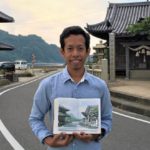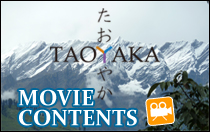Nugroho Setyo

Name: NUGROHO SETYO
Department: Graduate School of International Development & Cooperation
Course: Social Implementation
Research Field: Urban regeneration, railways station area, townscape, heritage tourism
Supervisor: Prof. Junyi Zhang
Career and Academic Background before TAOYAKA Program
I completed my bachelor degree in architecture (2007) at Institut Teknologi Sepuluh Nopember Indonesia (ITS) and master degree in urban design (2014) at the same university. During my bachelor and master degree, I got several fellowships and scholarships in the field of architecture and urban design. First, I was selected as Indonesian representative to participate in Tadao Ando program fellowship (2006), the program that gave me professional experiences in architecture and construction work. Further, I received scholarship from Kumamoto University to attend short-term joint research (2012), from Kyoto University to take part in the Southeast Asia Seminar which was held in Cebu, Philippines (2012) and from Japan Foundation (2016) to attend summer institute collaborative project in multidisciplinary background of study. Through these experiences, I got major chance to deepen my research interest especially about city and people. After graduating from master degree, I involved in several research works and collaborative projects such as urban design guideline, conservation planning, and architectural heritage studies. Recently, I participate in the community of local city history and urban sketchers which is essential to be practicing a deeper understanding in seeing a cityscape.
Research Plan in TAOYAKA Program
Big cities in Asian developing countries are facing transportation problems which also affect the social, economic, and environmental aspect such as lots of private car/motorcycle ownership, lack of parking lots management which decrease aesthetic value, and lack of opportunity to walk as the most significant criteria to create livable cities. To overcome these issues, some countries improve urban mass rail based transportation in order to create a better quality of life. The aims of the research are: to identify the potential heritages around the railway station, to create linkage between station and heritage spots along the existing/planned railways, and to find the criteria influencing the improvement of heritage tourism around railways station. Qualitative research is chosen because it is holistic that involves reporting multiple perspective, identifying many factors in a situation, investment of time sufficient to learn the culture, and also understand the context. The stage of research is: determining the case study, identifying the potential heritage by cognitive mapping, composing linkage concept between heritage spot and railway station, and compiling the criteria as specific requirements that should be fulfilled in order to apply urban regeneration around the railways station.
Career Plan after TAOYAKA Program
I am looking to use the knowledge in the field of urban design studies, travel behavior, townscape and railway station development area to engage in the local, national and international realm. I am particularly passionate about urban regeneration at the railway station and how to link it with heritage tourism. After completing the program, I hope to work as faculty member or researcher in the field of urban design which is dealing with urban regeneration, railways station development and heritage tourism. Appropriate methodology in urban regeneration will make a great contribution to local character of the place and create better urban environment in disadvantaged area, especially in Southeast Asian cities.





